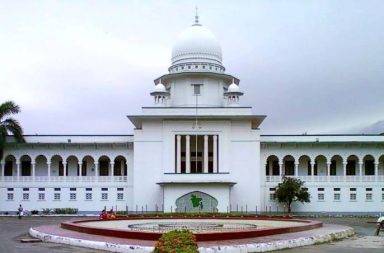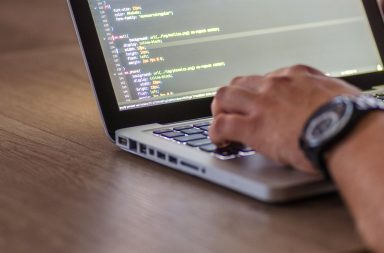By Emraan Azad [1]
Diversity in legal education is one of the unique features of the whole legal education system in South Asia. Cultural diversity coupled with regional as well as national, economic, political and ethnographical factors contributes to this stream of diversification. Unlike South Asia, few regions in the world can take pride in having so many languages; ethnic communities, races and religions (Ahmed: 2014, p. 329). All lumped up in what is practically a civilizational region today raises a question: what sorts of implications does the diversified legal education have for building a new age of post-colonial legal education system in South Asia? How can an improvised legal education help to have a better South Asia improving the quality of law students as well as law professionals?
Struggling with identity by maintaining institutional diversity has been an age-old quest in this part of the world, and there are good reasons for this. Post-colonial implications in legal education have hardly been perceived by many of the States while mainstreaming the concept of development either in economic or political sector. Empowerment or development does not always tend to mean only economic or political emancipation. Emancipation from poverty of legal education deserves our attention to realize how overhaul of existing legal education is important nationally, regionally and globally. Why it is important, one may reasonably ask. Improving the quality and standard of law students through legal education shows how developed a nation is in nurturing future judges or lawyers, arbitrators or academics for future. We often blame a particular legal system seeing its inadequacy in delivering justice to the marginalized section of the society. Even we start riding the cart of analyzing why an individual is marginalized instead of searching for the causes of absence of an improvised legal system. However when we go for critiquing the pros and cons of legal system’s weaknesses, we do not understand how the quality of law students matters for a high visionary legal system. Starting from ‘law making’ through the parliament to ‘delivering-justice’ through the judiciary; everywhere exists the importance of nurturing law students, bringing them up onto the pace of change, and enlightening them with the sense of creativity.
In this case, let me share with you a story of breaking an orthodox view in learning process. There was a young boy who was usually not attentive to the class lectures. He used to hate to listen to his teachers when they used to utter exactly from the book. One day the boy was late to enter the class and got his seat at the back beside the window. History teacher was delivering her lecture as usual and the whole class was listening to her words except that young boy. A bit later, teacher found the boy quite busy in doing something; she approached him and saw that the boy was drawing something in a piece of paper. The teacher asked, “What’re you drawing, my child?” “I’m drawing God’s picture!”, he replied instantly. “What! It’s impossible to do”, the teacher uttered with surprise, “Nobody has been able to do this ever! No success in doing it!” The boy looked at her, mildly smiled and naïvely replied, “You’ll see it once I’m done with the drawing!”
Whether he was right to draw God’s image is a different issue. But the sense he conveyed to us is bold enough to understand the perception of how a solo attempt of creativity to break conventional outlook in educational system is quite much-needed and possible. What we need to have is willingness and courage in us.
Any ‘sub-standard legal education’ basically contributes to producing graduates with skills below the standard and requirements of the day (Das: 2010). After being graduated, they join legal profession, become judges or lawyers. Some even pursue higher education in abroad to see the difference between his or her own legal education and others. But are the ones who are satisfied with their own ‘sub-standard legal education’ ready enough to compete at a global level with highly qualified legal professionals? The reply might be in the negative as we have started to understand the reasons behind it. Careful fusion of professional legal education with societal and global needs can be one approach of preparing law students for future fight in the competitive globalized world today. Besides, legal experts and academics, now students of one country are contributing to the knowledge of another country by writing pieces in the blog or adding best practices or values through participating in the cross-cultural events like moot court competitions, human rights residential schools, law students’ conferences and etc. Here, we see how professional legal education has increasingly been getting socialized across the national borders, despite existence of cultural diversity and attitudinal differences.
Professor N.R. MadhavaMenon from India suggests “professional legal education [needs] to be imbued with a spirit of social service and there is no better way of inculcating it except to expose [law students] while studying law to real life experiences” (Menon: 2001). His belief reflects in time of Gujarat earthquake in 2000 when Gujarat was struck by a severe earthquake causing terrible death and destruction in an unprecedented scale.
Seeing the images of the devastation on the TV screen and moved by the suffering of the people, Professor Menon along with his few colleagues from West Bengal’s National University of Juridical Sciences (NUJS) started discussion as to what the legal community like others could possibly do in such a situation. Several ideas came out, and finally they agreed to take a team to Gujarat to assist the victims using their knowledge of law and administration. There were a dozen students and a couple of faculty members in the team. The team stayed in Kutch for almost a week, did whatever they could do to mitigate the suffering and collected loads of data concerning the legal services which the victims needed then. On return to Ahmedabad, they submitted a report to the Legal Aid Authority as well as to the Chief Justice of the High Court who had a PIL on the same subject before him. Eventually, the court made use of their suggestions in ordering reliefs and services accordingly on the PIL pending before it (I came to know about this fact from a book titled Turning Point: The Story of a Law Teacher authored by Professor N.R. MadhavaMenon and published by Universal Law Publishing in 2010).
That was a great learning experience for law students and teachers on the issues of law’s functionality in social context, a realization of the poverty of law or the limits of it and the need for lawyers to be involved in organizing legal relief operations after large scale disasters in the country. Specially, the young law students who went to the affected areas seeking to carry out legal services to the victims came back with impressions and experiences which undoubtedly influenced their professional life and shaped their approach to justice.
Hence, perceiving the notion of justice through the lens of community-based learning, we can conclude by saying that in today’s global world we can have the best utilization of legal education’s poverty, not only for the benefit of law students but for all who are concerned with whole legal system in any country. We have neither time to blame poverty of legal education nor scope to keep a ‘sub-standard legal education’ anymore. Transcending the limits of law curriculum and understanding the poverty of legal education can give a desired value orientation in the making of future lawyers or academics in the days to come.
_________________
[1] Emraan Azad is a Lecturer of Law at the University of Asia Pacific, Bangladesh. He holds LLM and LLB degrees from the University of Dhaka, and a Diploma in Economic, Social and Development Rights from Kathmandu School of Law. Emraan can be reached at: emraan.law@gmail.com.



